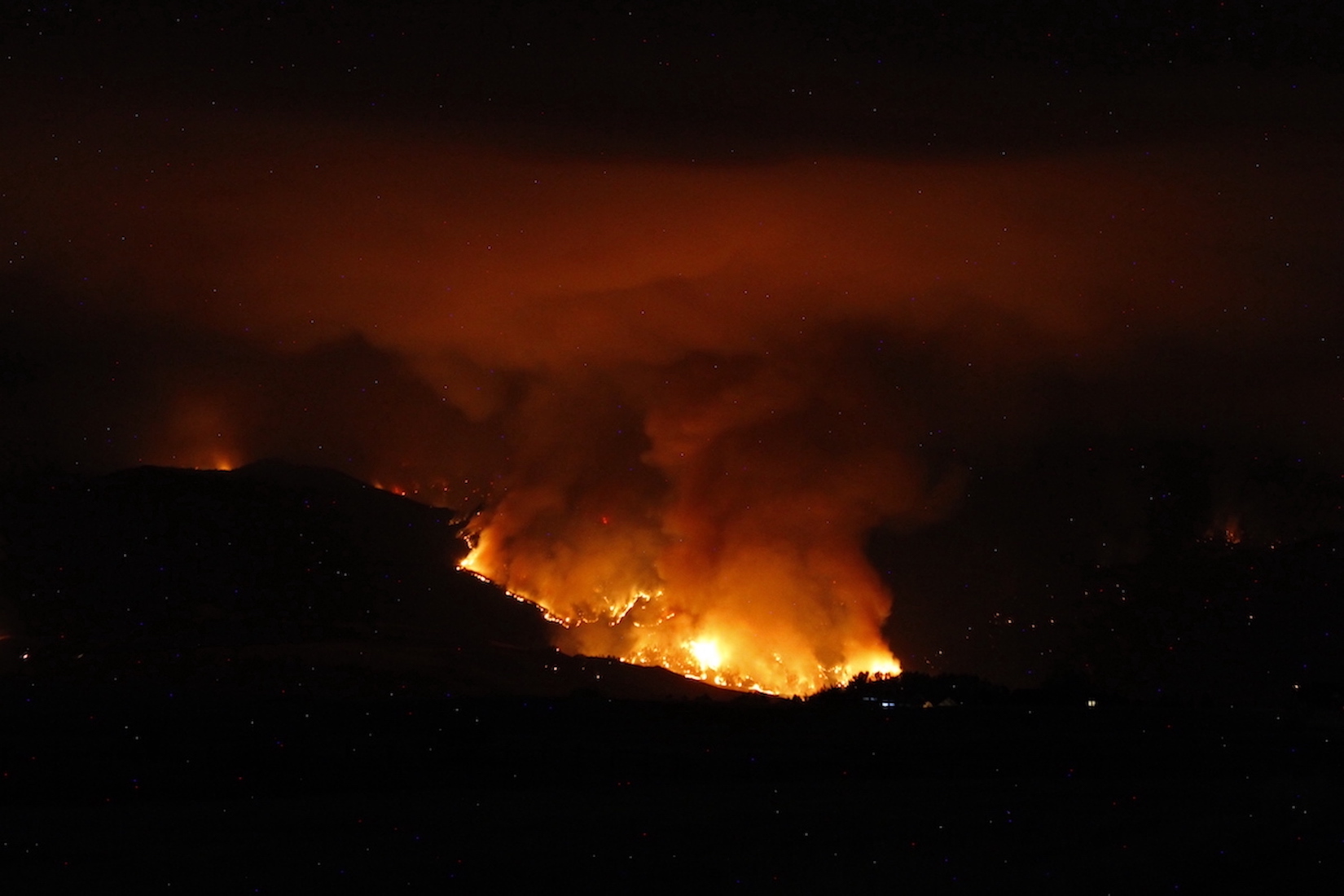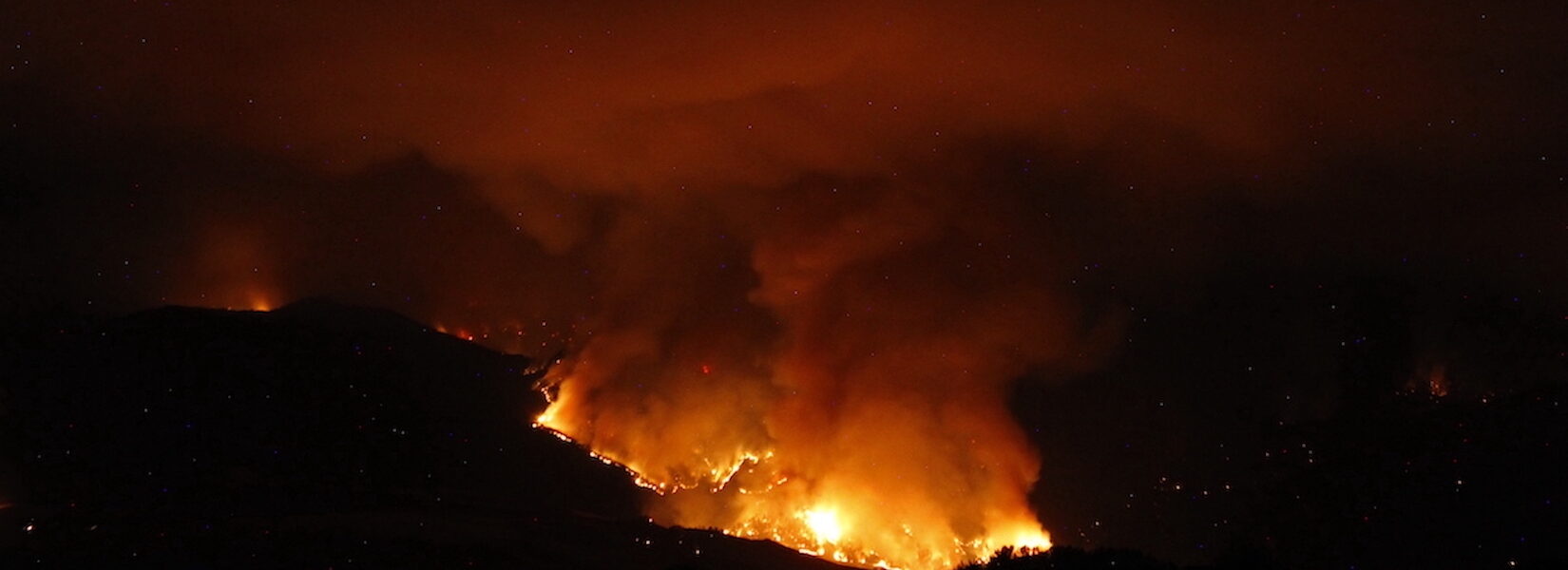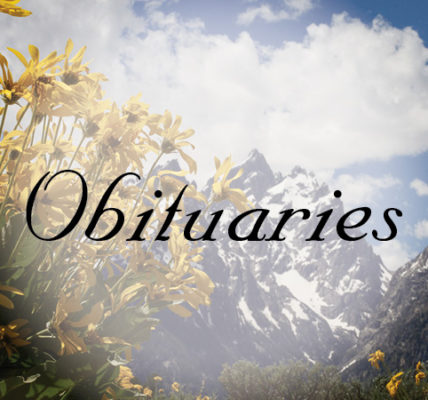When electric utilities spark wildfires, how much should they have to pay victims?

• The threat of billion-dollar class-action lawsuits bankrupting power companies has lawmakers considering a cap on claims.
By Dustin Bleizeffer, WyoFile.com
Lawmakers are scrambling to draft a bill that would restrict what wildfire victims can claim damages for when electric utilities spark blazes.
Insurance premiums for utilities are exploding due to class action lawsuits stemming from utility-caused wildfires that have resulted in death and property damage — particularly in the West. Some utilities fear they may lose insurance coverage while increasing insurance rates threaten to raise costs for electric customers and bankrupt some power providers, advocates of the liability cap say.
“I’ve said this before: We’re just one wildfire away from bankruptcy if we don’t have liability relief,” Wyoming Rural Electric Association Executive Director Shawn Taylor told WyoFile. “Because you’ve seen the billion-dollar lawsuits in Oregon and northern California. And so if we don’t have any type of liability relief, and somebody wants to claim damages that are in our mind frivolous — for a nonprofit [member-owned electric co-ops], we don’t have the deep pockets.”
Taylor led an ad hoc group of stakeholders that delivered a proposed draft to the Minerals Business and Economic Development Committee last week, outlining potential legislation to address the issue in Wyoming. The committee made several amendments to the document, Electric Utilities Wildfire Mitigation Plans and Liability, but noted it is not yet a formal draft bill. Co-Chairman Donald Burkhart Jr. (R-Rawlins) said the committee will meet virtually in coming weeks to review and vote on a formal version.
The idea is to limit power companies’ liability for “non-economic losses” suffered from utility-caused wildfires. Utilities would still be on the hook for bodily harm and property damage.
“It would protect electric utilities … from punitive and consequential damages that could bankrupt a non-profit cooperative and/or be passed on to the members who own the cooperatives,” said Mandy Good, an attorney representing the Wyoming Rural Electric Association. “Those types of damages could result in possible service disruption and much higher rates for all members of the cooperative (or other electric utility) because members would eventually pay for those lawsuit damages through their rates.”
To qualify, according to draft language, each utility must gain approval from the Wyoming Public Service Commission for a modernized “wildfire mitigation plan.” Such a plan, among other things, would include extra efforts to clear branches and other fuels away from powerlines, implementing protocols for “de-energizing” power lines at risk of sparking a fire and adding spark-arresting barriers around other electrified equipment.
If enacted, the liability protection would only apply to state and private property and not federal lands in the state.
Taylor said insurance company officials have assured the stakeholders’ group that such liability protections — which are being implemented in other states — would make it much more likely to continue offering coverage to Wyoming utilities.
Rising rates, either way
Wyoming’s largest electric utility, Rocky Mountain Power, cites skyrocketing wildfire liability costs in its current bid to increase rates by 14.7%, claiming its insurance premium in Wyoming has risen 1,888% over the past five years.
“As an industry, we’re in this really tough position right now where, because of that [wildfire] risk, we’re being forced into this position of being insurance companies of last resort,” Rocky Mountain Power President Dick Garlish told WyoFile in August.
They’re not the only ones. Taylor, of the Wyoming Rural Electric Association, said many small member-owned co-ops in the state worry whether insurance providers will offer them an opportunity to renew their coverage.
Both the stakeholders’ group and lawmakers acknowledged that the cost of extra wildfire mitigation efforts to qualify for the liability protection could be passed on to ratepayers. The Wyoming Public Service Commission would consider how much of those costs could be passed on, on a case-by-case basis, agency officials said. Even the Wyoming Office of Consumer Advocate, which scrutinizes such pass-ons to ratepayers, said the extra cost to consumers is prudent.
“The world is not as it was with larger droughts than we’ve experienced and extended wildfire seasons,” Consumer Advocate Administrator Anthony Ornelas testified. “I do not see this [requirement] as reducing our rates going forward. It is to insulate us from catastrophic financial impacts.”
Larger, regulated utilities that operate in the state are pushing for the liability protection.
“What we’re seeing is [potential] bankruptcy of utilities, which is not good for any of us,” Black Hills Energy Vice President of Regulatory Affairs Nick Wagner testified, adding that electric utilities “provide life-critical services.”
Committee Co-Chairman Burkhart said he will take the unusual step of considering the draft legislation beyond the committee’s scheduled interim period in hopes of introducing and passing a bill during the 2025 legislative session.
WyoFile is an independent nonprofit news organization focused on Wyoming people, places and policy.





